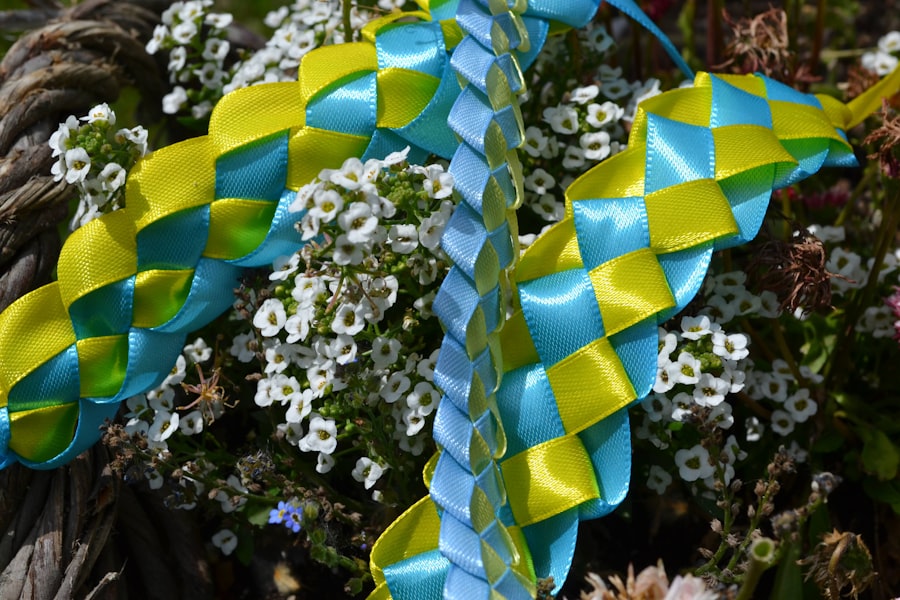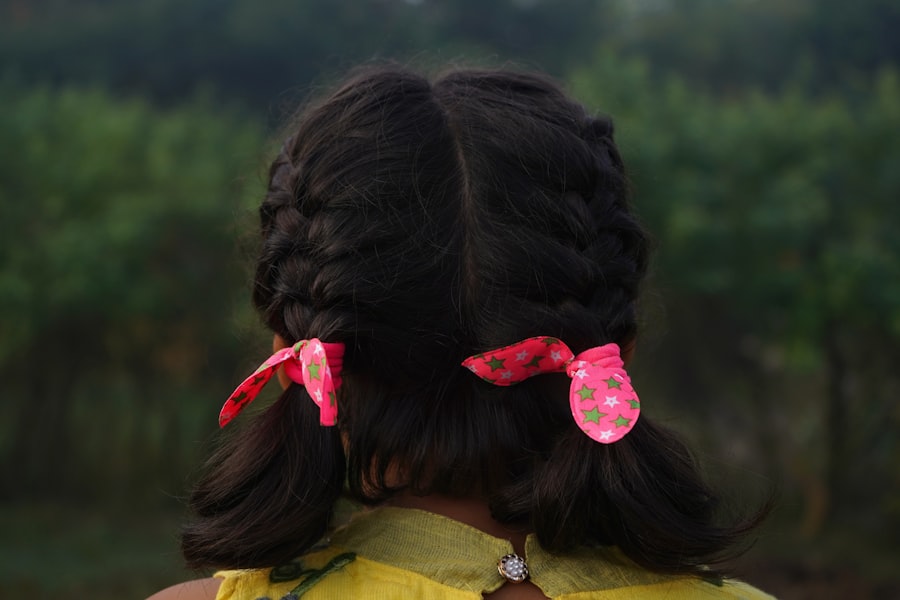Handfasting is a beautiful and ancient ritual that has been practised for centuries, often associated with Celtic traditions. This ceremony serves as a symbolic union between two individuals, celebrating their commitment to one another in a deeply personal and meaningful way. As you embark on this journey, you may find that handfasting offers a unique alternative to traditional wedding ceremonies, allowing for greater flexibility and creativity in how you express your love and devotion.
The act of binding hands together with ribbons or cords signifies the joining of lives, making it a powerful representation of your relationship. In recent years, handfasting has gained popularity among couples seeking to incorporate more personalised elements into their nuptials. This ceremony can be tailored to reflect your beliefs, values, and shared experiences, making it a truly bespoke occasion.
Whether you choose to include spiritual elements, cultural traditions, or simply your own unique flair, handfasting allows you to create a celebration that resonates with both of you. As you delve into the details of this enchanting ritual, you will discover the myriad ways in which you can make it your own.
Summary
- Handfasting is a traditional Celtic ceremony that symbolizes the binding of two people in marriage or commitment.
- When choosing the right location for a handfasting ceremony, consider natural settings such as forests, beaches, or gardens to enhance the spiritual and symbolic nature of the ritual.
- Selecting the handfasting ribbon is an important part of the ceremony, with couples often choosing ribbons that hold personal significance or meaning.
- Creating personal vows adds a unique and intimate touch to the handfasting ceremony, allowing couples to express their love and commitment in their own words.
- The handfasting ritual involves the wrapping of the chosen ribbon around the couple’s joined hands, symbolizing their union and commitment to each other.
Choosing the Right Location
Selecting the perfect location for your handfasting ceremony is crucial, as it sets the tone for the entire event. You might envision an intimate gathering in a lush garden, surrounded by blooming flowers and the gentle sounds of nature. Alternatively, a serene beach at sunset could provide a breathtaking backdrop for your vows, with the waves lapping at the shore as you exchange promises.
Consider what resonates with both of you as a couple; the location should reflect your personalities and shared experiences. When choosing a venue, think about the practicalities as well. Will you need permits for outdoor spaces?
How accessible is the location for your guests? You may also want to consider the weather and have a backup plan in case of rain or other unforeseen circumstances. Ultimately, the right location will not only enhance the beauty of your handfasting ceremony but also create an atmosphere that fosters love and connection among all who attend.
Selecting the Handfasting Ribbon

The ribbons or cords used in a handfasting ceremony are not merely decorative; they hold significant meaning and symbolism. When selecting your handfasting ribbon, consider colours that resonate with both of you. Each hue carries its own connotations—red may symbolise passion and love, while blue can represent loyalty and trust.
You might even choose to incorporate multiple colours to reflect different aspects of your relationship or to honour family traditions. In addition to colour, think about the material of the ribbon. Natural fibres such as cotton or silk can add an organic touch to your ceremony, while more textured materials like wool may evoke warmth and comfort.
You could also consider personalising the ribbons by adding charms or symbols that hold special meaning for you both. This thoughtful selection process will not only enhance the visual appeal of your handfasting but also deepen the emotional significance of the ritual itself.
Creating Personal Vows
Crafting personal vows is one of the most intimate aspects of a handfasting ceremony. Unlike traditional wedding vows that may follow a standard format, handfasting allows you to express your feelings in a way that is uniquely yours. Take time to reflect on what your relationship means to you and what promises you wish to make to one another.
This could include commitments to support each other through life’s challenges or to celebrate each other’s successes. As you write your vows, consider incorporating anecdotes or shared experiences that highlight your journey together. This personal touch will not only make your vows more meaningful but also resonate with your guests as they witness the love you share.
Remember that vulnerability is key; speaking from the heart will create an emotional connection that elevates the entire ceremony. Ultimately, your vows should encapsulate your love story and serve as a testament to your commitment as you embark on this new chapter together.
The Handfasting Ritual
The handfasting ritual itself is a poignant moment in your ceremony, where the physical act of binding your hands together serves as a powerful symbol of unity. As you stand before each other, surrounded by loved ones, the officiant will typically recite words that explain the significance of this act. This moment can be deeply moving, as it represents not only your commitment to one another but also the support and love of those gathered around you.
During this part of the ceremony, you may choose to include music or poetry that resonates with your relationship. This could be a song that holds special meaning for both of you or a reading that reflects your values and beliefs. The atmosphere should be one of love and celebration, allowing everyone present to feel the weight of this momentous occasion.
As the ribbons are tied around your hands, take a moment to absorb the significance of what is happening; this is a beautiful representation of your bond and the journey ahead.
Incorporating Symbolic Elements

To further personalise your handfasting ceremony, consider incorporating symbolic elements that reflect your beliefs and values as a couple. This could include lighting a unity candle, planting a tree together, or even sharing a drink from a shared cup. Each of these actions carries its own significance and can serve as a meaningful addition to your ritual.
You might also want to involve family members or friends in these symbolic acts, creating a sense of community and support around your union. For instance, having loved ones contribute herbs or flowers to a communal vase can represent their blessings on your marriage. By weaving these elements into your ceremony, you create a rich tapestry of meaning that enhances the overall experience for both you and your guests.
The Binding of Hands
The actual binding of hands during the handfasting ceremony is perhaps the most iconic moment of this ritual. As the ribbons are wrapped around your hands, it serves as a physical manifestation of your commitment to one another. This act can be accompanied by words spoken by the officiant or by yourselves, reinforcing the promises made during this sacred moment.
As you feel the ribbons encircle your hands, take time to reflect on what this binding represents: not just a union between two individuals but also an intertwining of lives, dreams, and futures. This moment is an opportunity to acknowledge the journey you’ve taken together thus far while looking forward to all that lies ahead. The binding signifies that you are now partners in life, ready to face whatever challenges may come your way together.
Conclusion and Post-Ceremony Traditions
As your handfasting ceremony comes to an end, take a moment to bask in the joy and love that surrounds you.
The conclusion of this ritual marks not just the end of one chapter but the beginning of another—a new life together filled with shared experiences and adventures.
After exchanging vows and completing the binding ritual, consider how you would like to celebrate this momentous occasion with your guests.
Post-ceremony traditions can vary widely depending on personal preferences and cultural backgrounds. You might choose to host a celebratory feast where everyone can gather and share stories about their own journeys in love. Alternatively, consider incorporating traditional dances or games that encourage laughter and connection among guests.
Whatever you decide, ensure that it reflects both of your personalities and allows everyone present to feel included in this joyous celebration. In conclusion, handfasting is not merely an alternative wedding ceremony; it is an opportunity for you to create something truly unique and meaningful. From selecting the perfect location to crafting personal vows and incorporating symbolic elements, every aspect can be tailored to reflect who you are as a couple.
As you embark on this journey together, remember that it is not just about binding hands but about intertwining lives in love and commitment for years to come.
If you’re considering incorporating a handfasting ceremony into your wedding and are seeking guidance on how to personalise this meaningful tradition, you might find it beneficial to explore the role of a celebrant in crafting such unique celebrations. A related article that could provide further insight is com/blog-being-a-fun-humanist-wedding-celebrant/’>“Being a Fun Humanist Wedding Celebrant”.
This piece delves into how celebrants can enhance your ceremony with their creativity and enthusiasm, ensuring that your handfasting is both memorable and reflective of your personal values and relationship.
FAQs
What is handfasting?
Handfasting is a traditional Celtic ritual in which a couple’s hands are bound together with cords or ribbons to symbolize their commitment to each other. It is often used as part of a wedding ceremony or as a way to mark a significant milestone in a relationship.
What are the origins of handfasting?
Handfasting has its origins in ancient Celtic and Norse cultures, where it was a common way for couples to signify their commitment to each other. It was later adapted by Christian traditions and is now often incorporated into modern wedding ceremonies.
How is a handfasting ceremony conducted?
During a handfasting ceremony, the couple’s hands are bound together with cords or ribbons while they make vows to each other. The cords are then tied in a knot, symbolizing the couple’s commitment to each other. The ceremony can be personalised to include readings, music, and other rituals that are meaningful to the couple.
What do the different colours of cords or ribbons used in handfasting symbolize?
The colours of the cords or ribbons used in a handfasting ceremony can hold different symbolic meanings. For example, red may symbolize passion, green may symbolize fertility and growth, and blue may symbolize loyalty and trust. Couples can choose colours that hold personal significance to them.
Is handfasting legally binding?
In the UK, handfasting is not a legally binding marriage ceremony on its own. Couples who wish to be legally married must also complete the necessary legal requirements, such as obtaining a marriage license and having a civil ceremony. Handfasting can be incorporated into a legal wedding ceremony as a symbolic ritual.

